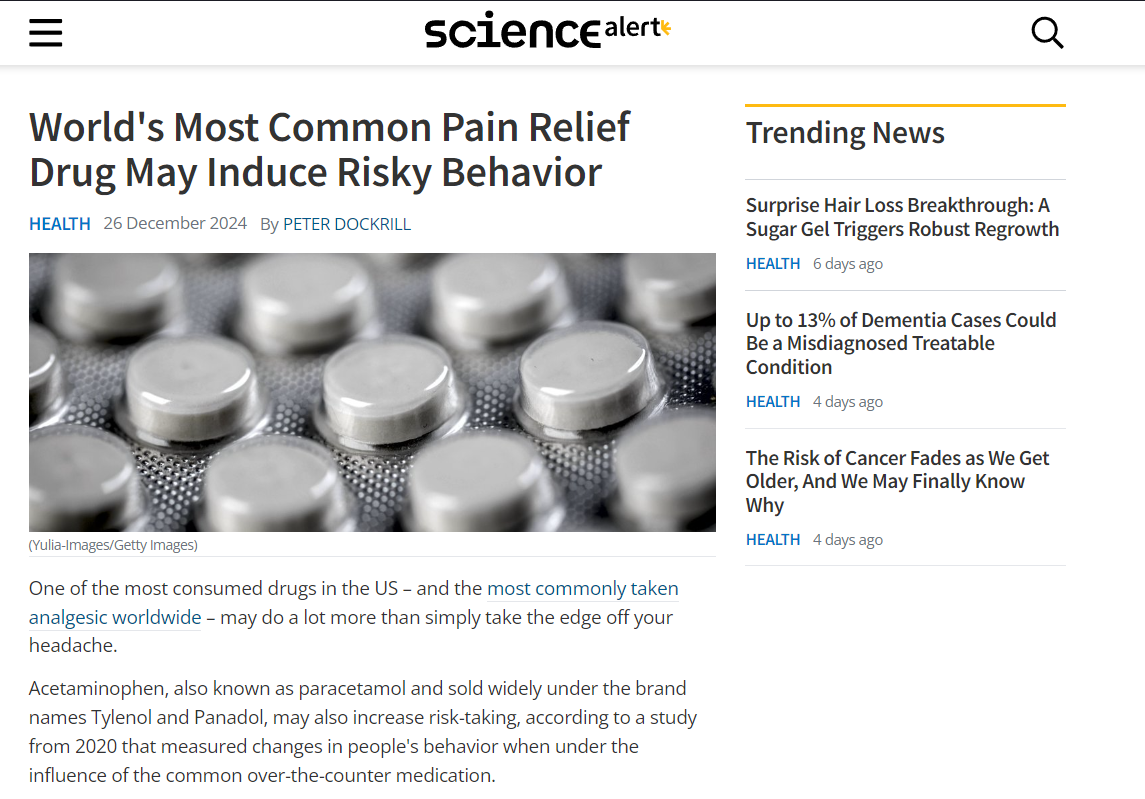I knew that it could destroy your liver if you overdosed, but inducing risk-taking behavior is something disturbing.
Alain R.
There are way too many caveats for this article’s claims to be understood as 100% proven (which is why I’m not advertising the article’s sensationalist title. It is merely indicative research, and the paper highlights other groups didn’t experience this ‘effect’.
So either the theory is incorrect or the tests are incorrect. They may be incorrect in a number of ways: factually, clinically, causatively, contextually, … there are so many cavaeats that:
“The article by Keaveney et al. entitled ‘Effects of acetaminophen on risk taking’ was published in July of 2020 and concluded that using acetaminophen increased risk-taking behaviors, potentially by reducing perceived risk. We believe that there is not enough data to support the generalization of this association and feel that the conclusions were presented without acknowledgement of the limitations of this study.
**Media articles often further dramatized these findings, presenting the potential correlation between acetaminophen and risk taking as fact**.
It is unfair to readers to sensationalize the associations seen in controlled experiments in an attempt to generalize the study’s findings. As scientists, we need to assure that the discussions and conclusions presented in publications appropriately highlight the limitations of studies. We must also work to assure that the public does not sensationalize preliminary and limited research results. (my emphasis)”
https://academic.oup.com/scan/article/16/5/537/6149315?login=false
There is also the fact that acetaminophen acts to lessen pain WHEN people are experiencing pain. These ‘volunteers’ were NOT in pain when taking the medicine, indicating that medicine may impact the way neurons work (obviously). Would it be as obvious? Also, we know that pain induces risky behavor:
https://pubmed.ncbi.nlm.nih.gov/31366275/
Also, if risky behavior is elevated when in pain, then would the acetaminophen act to elevate or dampen the risk. One paper, one result does not make a cure. Nor does it answer questions like that, since the volunteers weren’t in pain suggesting that the results may not be all that applicable in real world situations. In other words, you were probably duped to click on an article that was sensationalized. That the publishers sought to portray this as
